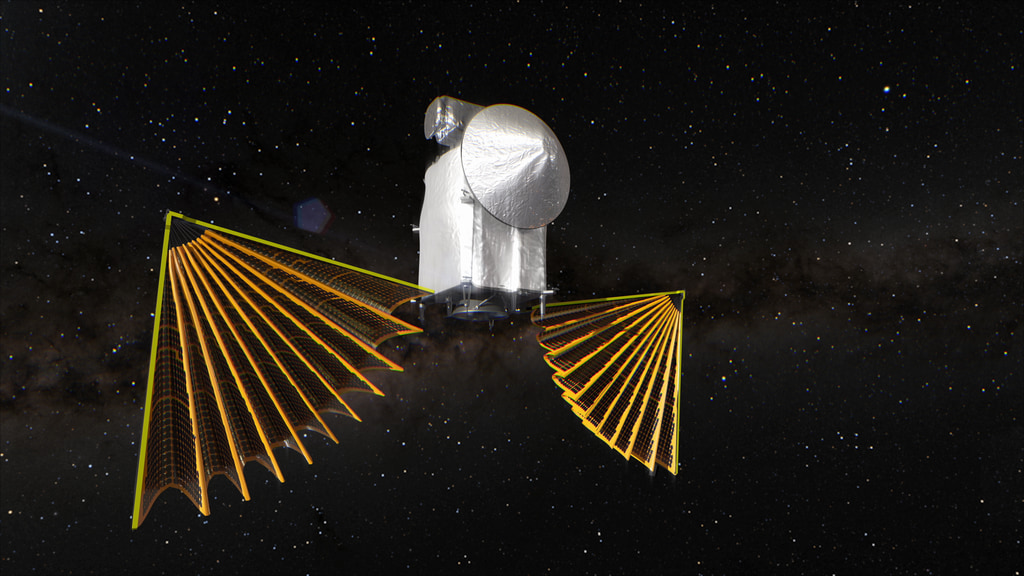NASA says a glitchy strap could be behind Lucy asteroid probe's solar array troubles
But the spacecraft's instruments are turning on smoothly.

NASA may be homing in on the glitch that kept a massive solar array on its new asteroid-bound spacecraft from properly deploying.
The agency's Lucy mission launched on Oct. 16 and about an hour after blast off, began deploying its two large solar arrays as scheduled. However, early analysis suggested that one of the two arrays, each more than 24 feet (7 meters) across, did not fully deploy. Now, mission personnel believe they have identified where the fault occured: a lanyard that helps the array deploy.
"Initial tests indicate that the lanyard that pulls out the solar array may not have completed the process successfully; however, it is still uncertain what caused this condition," NASA officials wrote in a statement published Friday (Nov. 5). "The team is conducting more tests to determine if this is indeed the case, and what the root cause might be."
Related: Meet the 8 asteroids NASA's Lucy spacecraft will visit
Teams on the ground are using an engineering model, in addition to the data being returned by the spacecraft, to evaluate the situation, the statement notes. The team will not command the spacecraft to attempt to fix the array until Nov. 16 at the earliest, the statement added.
Except for the stuck solar array, everything on the Lucy mission is working properly and the spacecraft is in cruise mode as was scheduled, according to the statement. Two of Lucy's three instruments have been turned on; the third is due to begin work on Monday (Nov. 8), the statement notes.
Engineers are still evaluating whether the solar array glitch will force mission personnel to adapt any of its future plans. Lucy is beginning its journey with a full year spent close to Earth, where its solar panels are designed to produce more than enough energy to power the spacecraft. However, sunlight is much dimmer at Lucy's destination, the Trojan asteroids that orbit the sun at the same distance as Jupiter.
Breaking space news, the latest updates on rocket launches, skywatching events and more!
Lucy is meant to fly past seven of these asteroids, plus one in the main asteroid belt, over the course of its 12-year mission. No spacecraft has ever visited the Trojans, which are sometimes referred to as the fossils of planet formation.
Email Meghan Bartels at mbartels@space.com or follow her on Twitter @meghanbartels. Follow us on Twitter @Spacedotcom and on Facebook.

Meghan is a senior writer at Space.com and has more than five years' experience as a science journalist based in New York City. She joined Space.com in July 2018, with previous writing published in outlets including Newsweek and Audubon. Meghan earned an MA in science journalism from New York University and a BA in classics from Georgetown University, and in her free time she enjoys reading and visiting museums. Follow her on Twitter at @meghanbartels.
